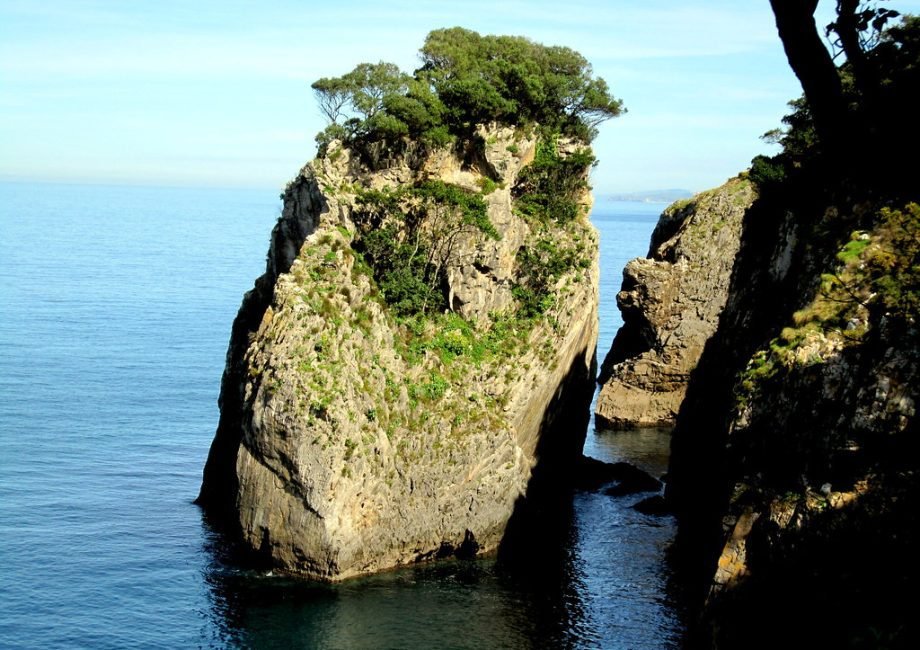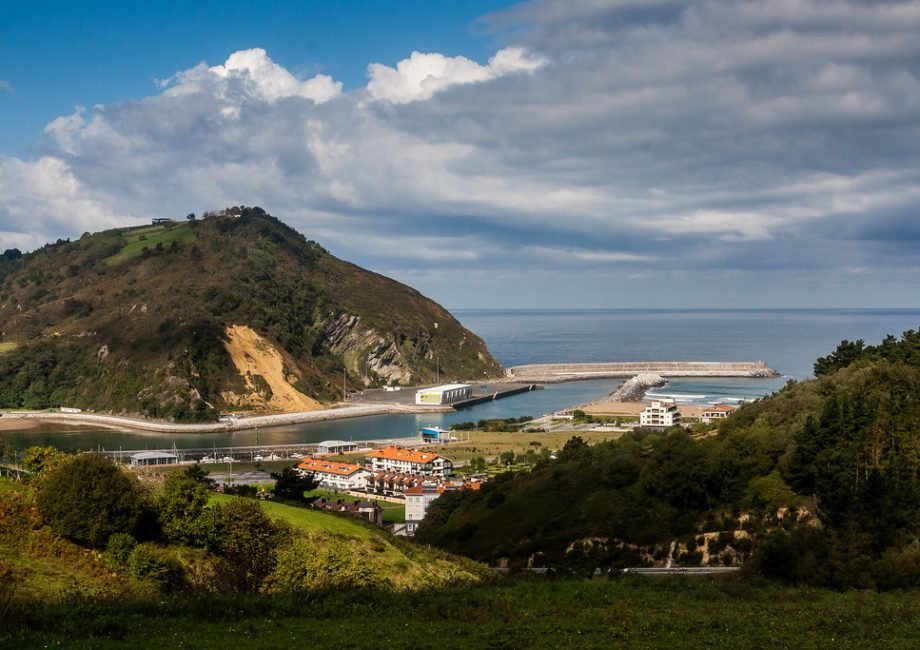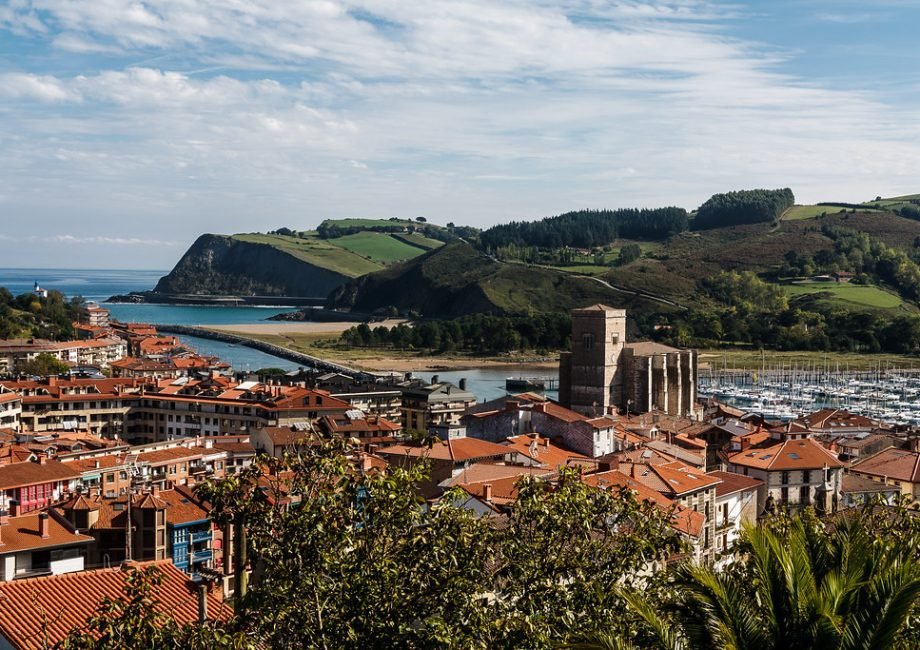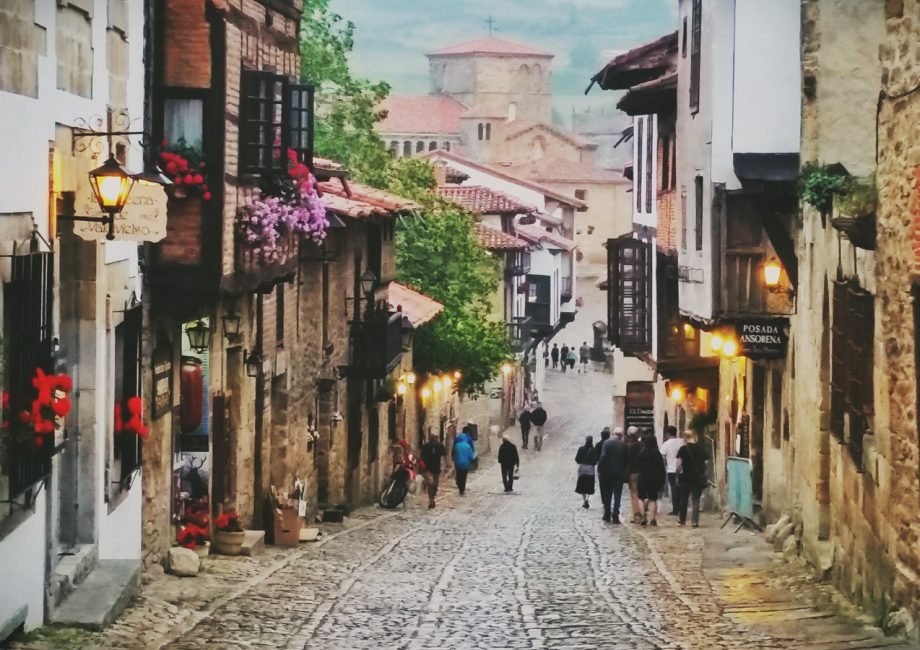Descubre el Camino de Santiago del Mar: Explora la Fascinante Ruta Costera hacia Compostela
The Camino del Mar is an alternative coastal route of the Camino de Santiago that offers a unique and spectacular experience to pilgrims. It begins in Ribadeo, runs along the northern coast of Galicia and joins the Camino Inglés in Ferrol, covering approximately 275 km. This route allows pilgrims to enjoy stunning maritime landscapes, cliffs, beaches and coastal towns along the way.
El Camino del Mar tiene una rica historia como ruta de peregrinación, con evidencia de la presencia de peregrinos y de infraestructura, como hospitales de peregrinos, a lo largo de la costa de Lugo. Sin embargo, a diferencia de otros Caminos de Santiago, carece de una red de albergues públicos para peregrinos, obligando a los caminantes a planificar y reservar alojamientos privados, especialmente en las secciones más remotas.
El Camino del Mar presenta tanto desafíos como recompensas para los peregrinos. Algunas de las etapas son bastante largas y exigentes, pero el esfuerzo se ve recompensado con vistas costeras impresionantes y una experiencia más solitaria y auténtica. Se aconseja a los peregrinos que se preparen bien, con un calzado y equipo adecuados, y que investiguen sobre las mareas y la navegación, ya que la señalización puede ser irregular en ciertas áreas.
El Impresionante Camino de Santiago del Mar: Una Experiencia Única en la Costa Gallega
El Camino del Mar, también conocido como Camiño do Mar o Camino al Mar, es una variante costera del Camino del Norte que ofrece a los peregrinos una experiencia única llena de paisajes espectaculares a lo largo de la costa norte de Galicia. Esta ruta alternativa permite al caminante disfrutar de la belleza del mar Cantábrico y del Atlántico mientras se dirige hacia Santiago de Compostela.
Tabla de contenido
1. Descubre el Emocionante Camino de Santiago del Mar: Una Introducción a la Ruta Costera
2. Historia y origen del Camino del Mar
3. Descubre las Etapas y el Recorrido del Emocionante Camino de Santiago del Mar
4. Principales lugares de interés de la ruta
5 Alojamiento y servicios para peregrinos
6. Consejos Esenciales para Preparar tu Viaje por el Camino de Santiago del Mar
7. Experiencias de peregrinos en el Camino del Mar
8. Conexión con otros Caminos de Santiago
9. Camino del Mar en bicicleta
10. Mapas y recursos del Camino del Mar
11. Conclusión: Por qué hacer el Camino del Mar
12. Galería de fotos de los paisajes más destacados
1. Descubre el Emocionante Camino de Santiago del Mar: Una Introducción a la Ruta Costera
The Camino del Mar is an alternative route to the Camino del Norte that separates from it in Ribadeo, in the province of Lugo, to follow the coast of Galicia to Ferrol, where it joins the Camino Inglés. This coastal variant offers pilgrims the opportunity to enjoy impressive maritime landscapes, cliffs, beaches and coastal towns along its approximately 275 kilometer route.
The Camino del Mar is a continuation of the coastal route of the Camino Norte , which when reaching Ribadeo splits, one deviates from the coast towards the interior through Ove, Arante, Lourenz and Mondoedo, the well-known Official Route of the Camino Norte, and another which continues along the coast, visiting the municipalities of the Mariña Lucense coast, the Camino del Mar.
2. History and origin of the Camino del Mar
The existence of the Camino del Mar as a pilgrimage route to Santiago de Compostela is widely documented throughout history. There are numerous testimonies that demonstrate the presence of pilgrims in the coastal area of Lugo, such as burials and references in documents from the Cathedral of Mondoñedo and other episcopal documents.
In addition, a large part of the old pilgrim hospitals that formed the assistance network along this route have been preserved, such as those in Ribadeo, San Martio, Cervo, Celeiro Viveiro and Santiago de Viveiro. This shows the importance that this coastal route had as a pilgrimage route throughout the centuries.
3. Descubre las Etapas y el Recorrido del Emocionante Camino de Santiago del Mar
The Camino del Mar has an approximate length of 275 kilometers, which is divided into 12 stages. The route begins in Ribadeo and continues through the coastal municipalities of Barreiros, Foz, Burela, Cervo, Xove, Viveiro, Ortigueira, Cedeira and Neda, where it joins the Camino Inglés until reaching Santiago de Compostela.
Some of the most notable stages are :
- Stage 1: Ribadeo – San Cosme de Barreiros (26.40 km) : This initial stage allows you to enjoy the famous Playa de las Catedrales in Ribadeo, one of the natural jewels of the Camino del Norte.
- Stage 4: San Ciprián – Viveiro (28.31 km) : A section that runs along the Mariña Lucense coast, passing through fishing villages and beaches such as Esteiro.
- Stage 8: Cariño – San Andrés de Teixido (21.20 km) : A stage that leads to the emblematic Sanctuary of San Andrés de Teixido, one of the main pilgrimage centers in Galicia.
- Stage 12: Covas – Ferrol (27.65 km) : The last stage before joining the Camino Inglés, with the opportunity to visit the San Julián Co-Cathedral in Ferrol.
It should be noted that the Camino del Mar has some quite long and demanding stages, which is a challenge for pilgrims. However, the reward is the stunning coastal landscapes that can be enjoyed along the route.
4. Main places of interest on the route
The Camino del Mar offers pilgrims the opportunity to visit numerous places of great historical, cultural and natural interest along its route. Some of the most notable are:
- Playa de las Catedrales (Ribadeo) : One of the most beautiful beaches in Spain, with impressive rock formations that can only be visited at low tide. It is an emblematic place on the Camino del Norte and a must on the Camino del Mar.
- Sanctuary of San Andrés de Teixido (Cedeira) : One of the main pilgrimage centers in Galicia, surrounded by legends and traditions. Its location next to the sea makes it a magical place.
- Loiba Cliffs (O Vicedo) : Impressive cliffs that reach 600 meters high, offering spectacular views over the Cantabrian Sea.
- Monastery of Santo Tirso (Portocelo) : Ruins of an old medieval monastery, with remains of a Celtic fort nearby.
- Cathedral of San Julián (Ferrol) : Imposing neoclassical cathedral that houses an altar of polychrome marble and gold leaf.
In addition, along the way you can visit numerous charming coastal towns, such as Ribadeo, Foz, Viveiro or Cedeira, where pilgrims can enjoy local cuisine and culture.
5. Accommodation and services for pilgrims
Unlike other Caminos de Santiago, the Camino del Mar does not have a network of public hostels for pilgrims. Instead, pilgrims must stay in private establishments such as hotels, hostels, guesthouses and rural houses.
This represents an additional challenge for pilgrims, who will have to plan their accommodation in advance, especially in some sections where options are more limited, such as in San Andrés de Teixido or Fazouro.
As for services, the Camino del Mar has the presence of some historic pilgrim hospitals, such as Santa Ana in Celeiro (Viveiro), which have been rehabilitated and can be visited.
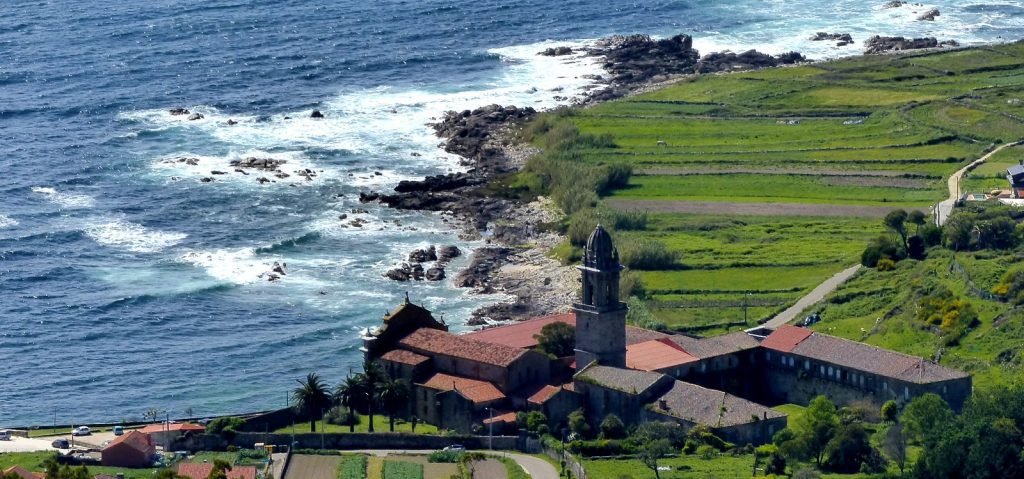
6. Consejos Esenciales para Preparar tu Viaje por el Camino de Santiago del Mar
Before embarking on the Camino del Mar, it is important to take into account some tips to prepare the route:
- Plan ahead : Book accommodations early, especially in more remote sections, as options are limited.
- Bring a GPS or detailed map : The signage on the Camino del Mar can be irregular in some sections, so it is advisable to have a GPS or detailed map to avoid losing your way.
- Prepare good footwear and equipment : Given the length and difficulty of some stages, it is important to wear comfortable and appropriate footwear, as well as light but complete equipment.
- Find out about the tide : In some sections, such as Playa de las Catedrales, access depends on the tide, so you should find out before leaving.
- Adapt the pace to your abilities : Don’t push yourself too hard, the Camino del Mar has some demanding stages, so adjust the pace to your possibilities and enjoy the path.
7. Pilgrim experiences on the Camino del Mar
The Camino del Mar is a less traveled route than other Caminos de Santiago, which gives it a more solitary and authentic character. Many pilgrims who have taken this route highlight the beauty of its coastal landscapes and the feeling of connection with nature that is experienced.
In addition, the Camino del Mar is a physical and mental challenge due to the length of some stages and the lack of infrastructure for pilgrims in some sections. However, this difficulty also translates into a more intense and rewarding experience for those who manage to complete the route.
8. Connection with other Caminos de Santiago
The Camino del Mar connects with other Jacobean routes at two key points:
- Ribadeo : The Camino del Mar separates here from the Camino del Norte, which continues towards the interior of Galicia.
- Ferrol : After traveling along the northern coast of Galicia, the Camino del Mar joins the Camino Inglés in Ferrol, to continue together to Santiago de Compostela.
This connection with other routes allows pilgrims to design longer and more complete itineraries, combining different Caminos de Santiago in a single pilgrimage. For example, you can take the Camino del Norte to Ribadeo, continue along the Camino del Mar to Ferrol and finish along the Camino Inglés to Santiago.
9. Camino del Mar by bike
Although the Camino del Mar is mainly designed to be done on foot, it is also possible to travel it by bicycle. However, it must be taken into account that some stages may present difficulties due to the rugged terrain and the lack of paths enabled for cyclists.
In general, it is recommended to bring a mountain or trekking bike to be able to tackle the most complicated sections. Additionally, it is important to plan in advance for accommodation and bicycle repair and maintenance services in different locations.
10. Maps and resources of the Camino del Mar
To prepare and complete the Camino del Mar safely and completely, it is advisable to have the following resources:
- Guides and maps : There are some specific guides and maps for the Camino del Mar, although they are less abundant than for other Jacobean routes. You can find some resources on specialized websites .
- GPS and mobile applications : Due to the lack of signage in some sections, it is very useful to have a GPS or a mobile application with the Camino del Mar tracks.
- Web resources : There are several blogs and web pages dedicated to the Camino del Mar, where you can find updated information, experiences of other pilgrims and practical advice.
11. Conclusión: Por qué hacer el Camino del Mar
El Camino del Mar es una ruta fascinante y desafiante que ofrece a los peregrinos la oportunidad de disfrutar de la belleza natural de la costa norte de Galicia, mientras avanzan hacia Santiago de Compostela. A pesar de las dificultades que presenta, como la falta de infraestructuras y la longitud de algunas etapas, esta ruta costera es una experiencia única y gratificante para quienes buscan un Camino de Santiago más auténtico y solitario.
Además, el Camino del Mar permite a los peregrinos visitar lugares de gran interés histórico y cultural, como el Santuario de San Andrés de Teixido o la Catedral de San Julián en Ferrol. Y, por supuesto, disfrutar de la rica gastronomía y hospitalidad de los pueblos costeros de Galicia.
Si buscas un Camino de Santiago diferente, lleno de paisajes impresionantes y retos personales, el Camino del Mar es sin duda una opción a tener en cuenta. Prepara tu mochila, calza las botas y atrévete a recorrer esta fascinante ruta costera hacia la meta final en Santiago de Compostela.
12. Photo gallery of the most outstanding landscapes
Below, we present a photo gallery with some of the most outstanding landscapes of the Camino del Mar Trail:
Images: Flicker
